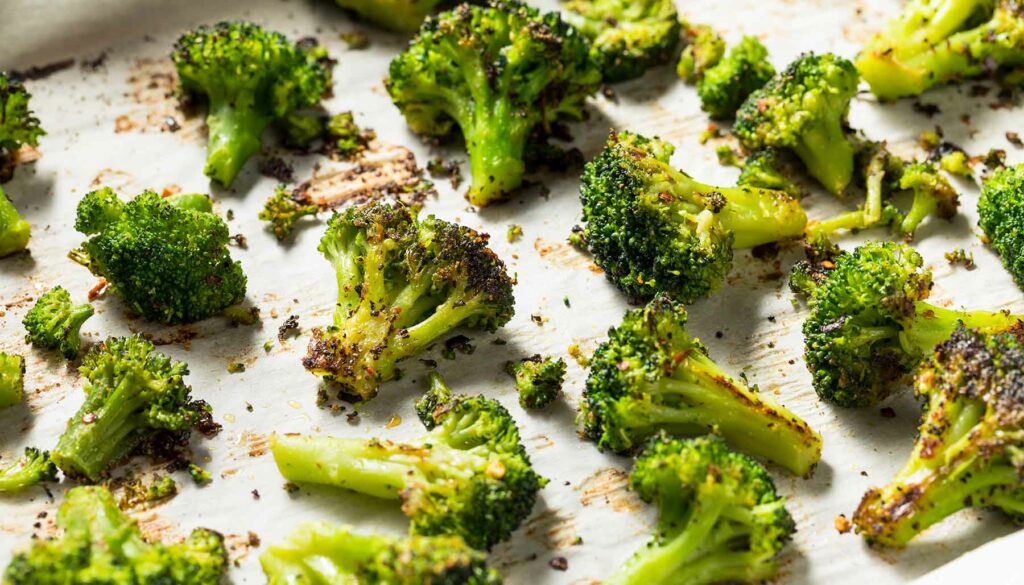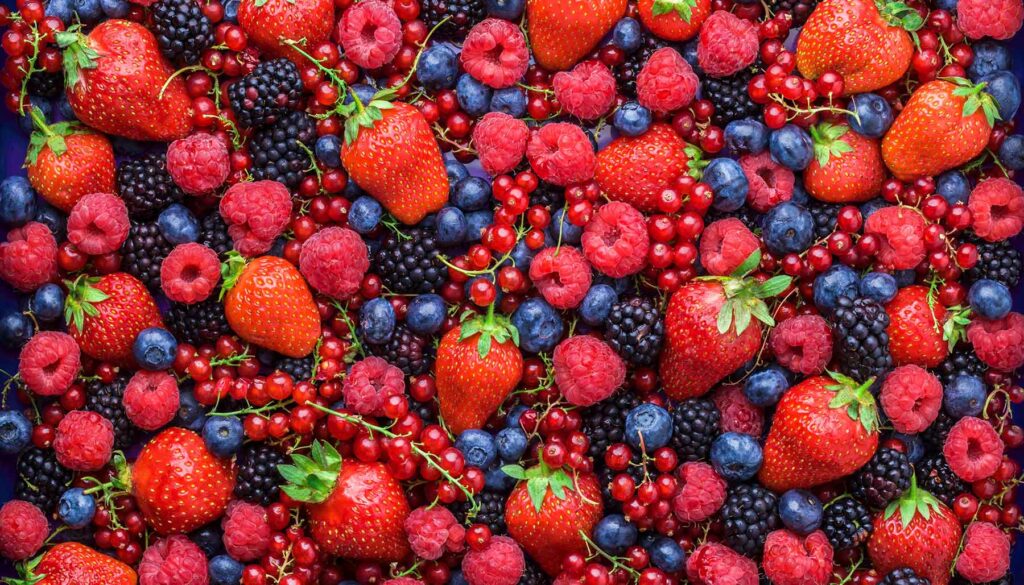By now, you’ve definitely heard of superfoods. The term is everywhere. It appears in articles, I’ve seen it mentioned in magazines from major publications, and it’s definitely all over the internet.
In fact, I’ve even used it a handful of times here already when talking about some of the healthiest foods to chow down on. From trendy new (well, new to the U.S. market) snacks like tiger nuts to well-known classics like broccoli, I definitely sing the praises of superfoods. Okay, but what are superfoods exactly? Is this an official food category? Why aren’t there superfood labels at the grocery store?
I do use the word as a shortcut to refer to certain foods. But, to be completely honest, the term “superfood” doesn’t refer to an actual food group. That means there are no set criteria for determining what fits into the designation. It is not a label you will find in a grocery store, and a doctor isn’t going to recommend that you eat more superfoods – not using that term specifically, anyway.
What Is a Superfood?
So, what are superfoods, then, and where did the term come from?
The term “superfood” was coined by the food industry for marketing purposes. It influences food trends and sells products. It doesn’t really have any root in academic research. The term isn’t commonly used by dietitians, nutrition scientists, or other experts.
In fact, the term first appeared as a way to market bananas by the United Fruit Company during World War I. These fruits were cheap, nutritious, easily digested, and available throughout the year. I mean, that sounds pretty super to me. Check out some of these vintage ads that apparently had the American public going bananas for bananas!
As expected, since “superfood” is a marketing term versus an actual research-based category, you won’t find an official definition from regulatory authorities. The United States Food and Drug Administration, the Department of Agriculture, or the European Food Safety Authority aren’t going to regulate what is called a superfood.
In other words, superfoods aren’t exactly real. I mean, the word is in the dictionary, but so are words like “bling-bling” and “zaddy.” Okay, so superfood isn’t a real classification or regulated food group. So why are we paying so much attention to the term “superfood,” then?
Superfoods Can Still Be Pretty Healthy, Official Food Group or Not
Although it is not an official scientific term, whole foods that are frequently referred to as superfoods are often nutritionally dense and good for your health. They contain a variety of nutrients and antioxidants, healthy fats, fiber, and phytochemicals. You will often find that whole foods sporting the “superfood” label are often low in calories, fat, and cholesterol.
They can provide plenty of health benefits, like decreasing the risk of cancer or heart disease, preventing diabetes, and promoting digestive health. Just don’t let anyone fool you into thinking a superfood can cure anything.
Consuming superfoods is certainly a good idea. However, it is important to make sure that you are eating a variety of these healthy foods. Consuming one or just a few superfoods in large quantities will still result in an unhealthy, unbalanced diet.
Keep in mind, though, that the term “superfood” is indeed a marketing term. It was invented to help sell products. That means that you should never blindly trust that something is healthy without checking it out for yourself! With whole foods, like raw veggies, for instance, there’s really nothing to worry about. But be wary of anything packaged or processed claiming to be a superfood, or being made from superfoods.
It’s important to note that they may lose some of their nutritional value with processing, or may have a lot of added sugar, just like with any other food item. What you end up with is a bunch of empty calories. And while that product may have been made from healthy ingredients, that doesn’t always make the end product healthy, too. That is why sticking to whole foods as often as possible is the best way to go.
Here is a list of some popular foods that are commonly referred to as superfoods:
Salmon and Other Fatty Fish

Salmon, along with sardines, mackerel, and other fatty fish are rich in omega-3 fatty acids, which can lower the risk of heart disease and stroke, and reduce inflammation. These fatty fish may also lower your risk of diabetes, and help maintain a healthy weight.
There is concern over possible contamination with mercury and other environmental pollutants. Some studies suggest that the health benefits of these fish outweigh the risk of harming your health from the mercury.
However, if you are concerned about the level of mercury and other environmental pollutants that these fish might contain, avoid eating fish that are higher up on the food chain like sharks, swordfish, and king mackerel. They contain higher levels of mercury than smaller fish, like sardines and smelt. You should also limit your consumption to two or three servings of fish per week.
Related: Healthy Weeknight Meals That Are Faster Than Takeout
Leafy Greens
Dark leafy greens, like kale, spinach, swiss chard, or collard greens, are excellent sources of folate, zinc, calcium, iron, magnesium, vitamin C, and fiber. They also have high levels of carotenoids, which are anti-inflammatory compounds that might protect against certain types of cancer.
If you’re from the southern United States, you already know how delicious these leafy greens can be, because your grandma probably makes some bangin’ collards. If you’re looking for another way to incorporate them into your diet, try adding them to salads, stir fry, soups, and smoothies. There’s no wrong way to get more leafy greens!
Broccoli and Other Cruciferous Vegetables

I can’t talk about superfoods without talking about broccoli and friends! So-called cruciferous vegetables, which include broccoli, Brussels sprouts, cauliflower, and cabbage, definitely deserve a spot on this list. These veggies are extremely healthy, and we should all be eating several servings each week!
All of these vegetables are packed full of phytochemicals, vitamins, minerals, and fiber, while also being low in calories. That makes them incredibly nutrient-dense. More bang for your buck!
The health benefits depend on specific vitamins and minerals found in each of these vegetables, but overall, most of them share some of the same benefits. They may help to lower inflammation and reduce the risk of developing many chronic diseases, including certain cancers and heart disease. There may also be a link between cruciferous vegetables and a lower risk of diabetes and Alzheimer’s disease – though more research is necessary.
Sweet Potatoes and Other Root Vegetables
Sweet potatoes and other root vegetables are more than just carbs! We’re talking about parsnips, yams, potatoes, carrots, beets, and even those tiger nuts I mentioned before.
They are, of course, packed with healthy carbs and starches that will give you the energy that you need. But, these vegetables are also packed with fiber and antioxidants, and they all contain a wide variety of vitamins and minerals. Plus, they are low in fat and cholesterol. Yeah, we often think of potatoes as a fattening food, but that’s usually due to how they are prepared!
There could be links between root vegetables and improved type 2 diabetes management, reducing the risk of certain cancers, and preventing obesity. As an added bonus, they are also gluten-free, making them a great source of nutrients for those with celiac disease.
Related: Sweeten Your Meals With These Sweet Potato Recipes
Nuts and Seeds

Various nuts and seeds are rich in fiber, protein, and healthy fats. They can also contain compounds with antioxidant and anti-inflammatory properties, plus a variety of other important vitamins and minerals.
Although these can be healthy, they are high in calories compared to their relatively small size. Just a handful of nuts could contain more than 100 calories. It’s crucial that you don’t consume too many at a time – which, let’s be honest, is pretty easy to do.
Beans and Other Legumes
Beans are a great source of low-fat, plant-based protein. They also contain plenty of fiber and lots of vitamins and minerals. They offer lots of health benefits like improving digestive health, reduced blood pressure and cholesterol, improved type 2 diabetes management, and can also help maintain a healthy weight.
When legumes like beans and lentils are combined with grains like wheat, rice, and corn, they create a complete protein, which is especially important to vegetarians and vegans.
Berries

Blueberries are often mentioned as a superfruit, thanks to their high levels of antioxidants in comparison to other fruits and veggies. They contain vitamins A and C, plus flavonoids. But other berries, like cranberries and strawberries, also boast plenty of the same health benefits as blueberries. They are all rich in various vitamins, soluble fiber, and phytochemicals.
Berries can help alleviate symptoms from various digestive and immune-related disorders. The antioxidants in berries are associated with reducing the risk of heart disease, cancer, and other inflammatory conditions.
Related: 5 Easy Strawberry Recipes You Won’t Be Able to Resist













